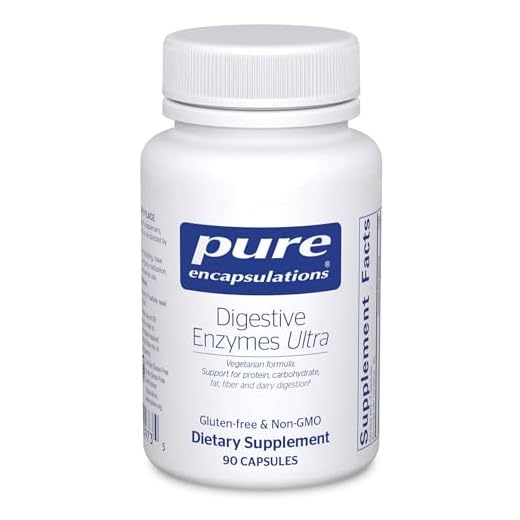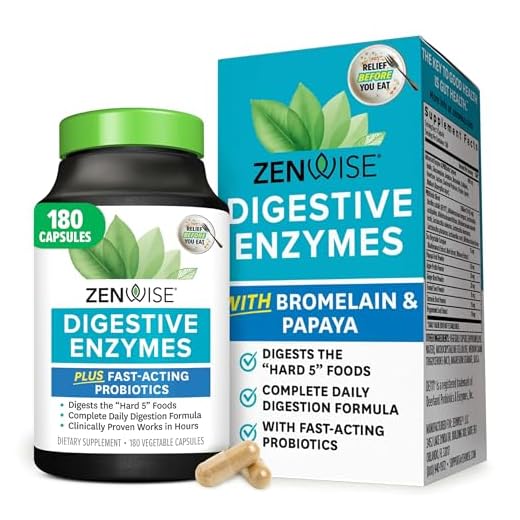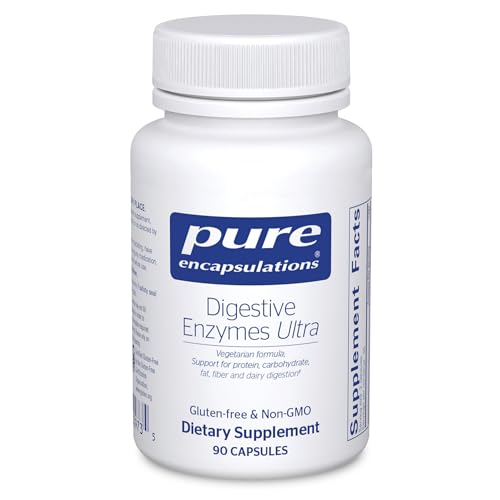



When you sit down to enjoy a satisfying meal, your body undergoes a complex series of processes to break down the food into nutrients that can be used for energy and vital functions. A crucial component of this process is the digestion of proteins, which play a fundamental role in the growth, repair, and maintenance of tissues and organs.
As your digestive system gets to work, enzymes secreted by various organs, such as the stomach and pancreas, spring into action. These enzymes act as catalysts, accelerating the breakdown of proteins into their individual building blocks called amino acids. These amino acids are then absorbed by the small intestine and transported to different parts of the body via the bloodstream.
However, have you ever wondered how much protein your body can efficiently digest and absorb in a single meal? While it varies from person to person, several factors come into play. The type of protein, its source, and other food components present in the meal can all influence the rate and efficiency of protein digestion.
The quality of protein is an essential consideration. Proteins derived from animal sources, such as meat, eggs, and dairy products, tend to be more easily digested compared to plant-based proteins like legumes, grains, and nuts. This is due to the differences in their amino acid profiles and the presence of certain enzymes that aid in their digestion.
Another crucial factor is the quantity of protein. While protein consumption is vital, exceeding your body’s capacity to digest and absorb it can have limited benefits. The digestive system has a finite capacity for protein digestion, meaning that excess protein may not be optimally utilized and can even put strain on your kidneys.
Understanding the Process of Protein Breakdown and Absorption
When it comes to the way our bodies break down and absorb protein, it is essential to grasp the intricate mechanism that occurs in our digestive system. By understanding this process, we can gain insights into the factors that affect protein digestion and optimize our protein intake accordingly.
Protein digestion begins in the stomach, where it is exposed to stomach acid and enzymes. These substances work together to break down the protein into smaller molecules called peptides. From the stomach, the partially digested protein moves into the small intestine, where further breakdown occurs.
- Enzymatic breakdown: Within the small intestine, pancreatic enzymes are released to further break down the peptides into smaller building blocks called amino acids.
- Transport across the intestinal lining: Amino acids, being the end product of protein digestion, are then transported across the intestinal lining into the bloodstream.
- Utilization by the body: Once in the bloodstream, amino acids are carried to various tissues and organs, where they are utilized for numerous essential functions, including muscle repair, hormone production, and immune system support.
It is important to note that the efficiency of protein digestion varies based on factors such as the type and quality of protein consumed, individual metabolism, and overall health. Consuming a variety of high-quality proteins and maintaining a healthy digestive system can optimize protein digestion and absorption.
Keep in mind that while the body has the capacity to digest and absorb a significant amount of protein in one meal, it is advisable to evenly distribute protein intake throughout the day to support optimal utilization and prevent overloading the digestive system at one time.
Factors Influencing Protein Digestion Efficiency
The efficiency of protein digestion is influenced by various factors that impact the body’s ability to break down and absorb proteins. These factors determine how effectively the body can extract essential amino acids from proteins for use in various physiological processes.
1. Gastric Acid and Enzymes
The presence of gastric acid, produced in the stomach, is essential for the initial breakdown of proteins. It denatures proteins and activates the enzymes pepsin and gastric protease, which further degrade proteins into smaller peptides.
2. Digestive Enzymes in the Small Intestine
After gastric digestion, partially digested proteins reach the small intestine, where various digestive enzymes are released. These enzymes, including trypsin, chymotrypsin, and peptidases, break down peptides into individual amino acids, facilitating their absorption into the bloodstream.
In addition to the presence of these digestive enzymes, factors such as enzyme activity, pH levels, and the composition of the meal can also affect protein digestion efficiency.
Enzyme Activity:
The activity of digestive enzymes can vary among individuals and is influenced by genetic factors, overall health, and age. Reduced enzyme activity may lead to incomplete protein breakdown and poorer amino acid absorption.
pH Levels:
The optimal pH range for protein digestion varies depending on the specific enzyme involved. For example, pepsin functions optimally in an acidic environment, while enzymes in the small intestine require a more neutral pH. Imbalances in pH can inhibit enzyme activity and hinder protein digestion.
Composition of the Meal:
The macronutrient composition of a meal can also affect protein digestion. High-fat meals, for instance, may delay gastric emptying and slow down the release of digestive enzymes, potentially reducing protein digestion efficiency.
Conclusion
In summary, protein digestion efficiency is influenced by various factors, including the presence and activity of digestive enzymes, pH levels, and the composition of the meal. Understanding and optimizing these factors can help enhance protein absorption and utilization by the body.
The Role of Enzymes in Protein Breakdown
Efficient breakdown of protein in the human body heavily relies on the crucial involvement of enzymes. These specialized proteins play a pivotal role in catalyzing the complex process of protein digestion, ensuring the adequate assimilation of essential amino acids required for various physiological functions.
Enzymes are biologically active substances that act as catalysts, accelerating the rate of chemical reactions without being consumed themselves. In the context of protein digestion, enzymes facilitate the hydrolysis of peptide bonds that hold amino acids together in complex protein structures. This breakdown process occurs in several stages, with different enzymes taking the lead at each stage and targeting specific regions of protein molecules.
The stomach, for instance, harbors an enzyme called pepsin, which functions optimally under acidic conditions. Pepsin works by breaking down proteins into smaller peptide chains. Subsequently, these partially digested proteins move into the small intestine, where pancreatic enzymes such as trypsin, chymotrypsin, and carboxypeptidase take over the further breakdown process. These enzymes cleave the peptide chains into even smaller fragments, known as dipeptides and tripeptides.
Lastly, at the brush border of the small intestine, specialized enzymes called brush border enzymes finish the job by hydrolyzing the remaining dipeptides and tripeptides into individual amino acids. These amino acids are then actively transported into the bloodstream and distributed throughout the body for various physiological functions, such as muscle repair and hormone synthesis.
The remarkable efficiency of these enzymes in breaking down proteins is crucial for the body to obtain the necessary amino acids for growth, repair, and overall health. Without these enzymes, the breakdown process would be significantly impaired, leading to inadequate digestion and absorption of dietary proteins.
Therefore, understanding the essential role of enzymes in protein digestion underscores the significance of maintaining a balanced diet that provides all the necessary amino acids while supporting the optimal functioning of these digestive enzymes.
Optimal Protein Consumption per Meal
In this section, we will explore the recommended intake of protein per meal in order to support a healthy and balanced diet. It is important to understand the optimal amount of protein one should consume during a single meal to aid in muscle growth, repair, and overall well-being.
Understanding Protein Needs
When it comes to protein consumption, the human body has an optimal limit for how much it can effectively utilize during each meal. This limit ensures that the body can efficiently process and absorb the necessary amino acids required for various bodily functions.
Determining the exact amount of protein one should consume per meal depends on various factors:
- Activity level
- Body weight and composition
- Age
- Gender
- Overall health
The Recommended Protein Intake
It is generally recommended that individuals aim to consume approximately 20-30 grams of high-quality protein per meal. This amount is based on scientific research and is considered an optimal range to support muscle protein synthesis.
Note: High-quality protein sources include lean meats, poultry, fish, dairy products, eggs, legumes, and plant-based proteins such as soy, quinoa, and chickpeas.
Consuming the recommended amount of protein per meal allows for efficient utilization and absorption by the body. It is important to spread protein intake evenly throughout the day to help sustain muscle protein synthesis and support overall health.
In conclusion, understanding the recommended protein intake per meal is essential for individuals looking to optimize their nutritional intake. By consuming an appropriate amount of protein, individuals can ensure their bodies receive the necessary nutrients for muscle growth, repair, and overall well-being.
Maximizing Protein Absorption for Optimal Muscle Growth
Enhancing protein utilization is imperative for achieving optimal muscle growth. By maximizing the absorption and utilization of protein, you can amplify the benefits of your workouts and support the development of lean muscle mass. This section explores effective strategies to optimize protein absorption, allowing you to harness the full potential of protein for muscle growth.
Understanding Protein Digestion and Absorption
Protein digestion and absorption refers to the process by which the body breaks down consumed protein into its constituent amino acids and absorbs them for various bodily functions, including muscle synthesis. It is essential to comprehend the intricate mechanisms involved to enhance protein absorption effectively.
Amino acids are the building blocks of protein, and they are categorized into essential and non-essential types. Essential amino acids cannot be synthesized by the body and must be obtained from dietary sources, while non-essential amino acids are produced naturally within the body.
Strategies for Optimizing Protein Absorption
1. Timing: Consuming protein-rich meals and snacks at regular intervals throughout the day can facilitate optimal protein absorption. Eating protein shortly after exercising, in particular, can enhance the synthesis of muscle protein.
2. Quality: Incorporating high-quality protein sources, such as lean meats, fish, dairy products, and plant-based proteins, into your diet can improve protein absorption. These sources are rich in essential amino acids, promoting superior muscle growth.
3. Digestive Enzymes: Certain digestive enzymes, such as proteases, can enhance protein breakdown and absorption. Consider incorporating enzyme-rich foods or supplements into your diet to support efficient protein utilization.
4. Balanced Macronutrients: Consuming a balanced meal that includes a combination of carbohydrates, fats, and protein can optimize protein absorption. The presence of other macronutrients can stimulate the body’s release of digestive enzymes, facilitating protein breakdown and absorption.
5. Hydration: Staying adequately hydrated is crucial for optimal protein absorption. Water supports efficient digestion and nutrient absorption in the body, including protein.
By implementing these strategies, you can enhance protein absorption, enabling your body to make the most out of the protein you consume. Maximizing protein absorption is a key factor in achieving optimal muscle growth and supporting your fitness goals.






